
Tobago
Dream Plan Tobago
Much of local life in Tobago revolves around its food, with a calendar of tasty food festivals to celebrate local produce, and many hidden spots around the island where you can rub shoulders with the locals at a barbeque or tuck into a traditional dish at a street-side food stall. In Tobago, mealtimes are not just about eating your fill, they are about community spirit, spending time with loved ones, and keeping age-old traditions and cultures alive. By joining Tobagonians for breakfast, lunch and dinner, you can enjoy a unique and authentic dining experience that not only gives you a taste of true Caribbean flavour, but a chance to sample Tobago’s rich culture and laidback way of life. Here are the foods you should try on the island and the most authentic spots to find them…
Curried crab and dumplings

A favourite among locals not just from Tobago but from all over the Caribbean, curried crab and dumplings is the unofficial national dish of Tobago, and for good reason: the sweetness of the dumpling mixed with the spicy tang of the saucy shellfish makes for a moreish match. For an authentic curried crab experience, head down to the beach shacks that line the pristine sands of Store Bay, queue up with the Tobagonians, and wait for a portion to be piled on your plate. Find a spot on the beach and tuck into your lunch with the sparkling Caribbean Sea as your view and soundtrack. Bliss!
Bread from a dirt oven
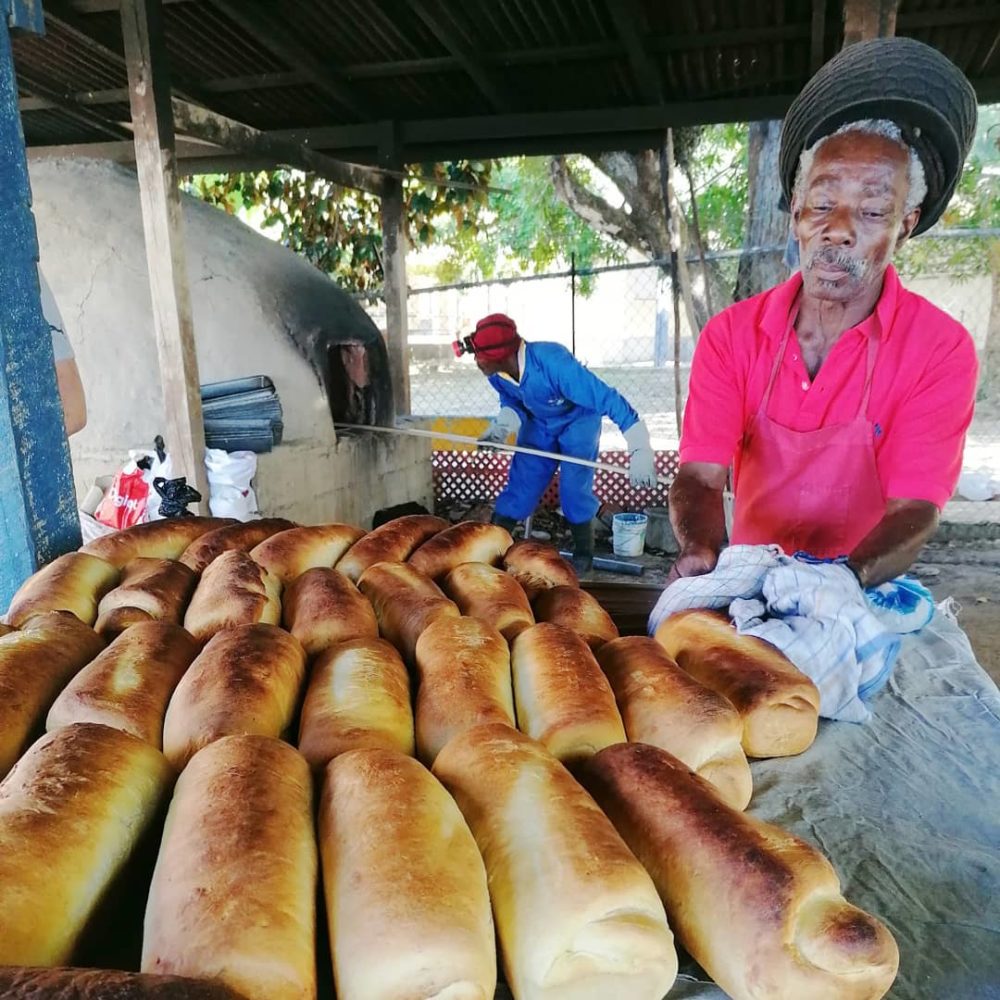
Tasting this island treat requires an adventure in itself. Lace up your hiking boots or jump on a bike to head off-the-beaten-track to the northern village of Castara. Once at this traditional village, you will discover row upon row of tables covered in baked goods. This is the local Castara bake sale, a smorgasbord of freshly-baked pumpkin loaves, wheat breads, coconut tarts and much more. What makes them so special? All of the breads are cooked in the village’s community dirt oven, a traditional practice that has been passed down the generations. For an authentic insight into local life here, join the people who come from across the entire island every Thursday and Saturday to buy goods from the bake sale. Breathe in the pastry-shop aroma, take a bite of a still-warm slice of bread, and talk to the bakers about the long history and importance of the dirt oven: they will be happy to show you how the oven works and teach you about its origins.
Did you know? Different communities bake in their dirt ovens on different days: visit them to try dirt oven pizza, garlic bread and sweetbread.
Sweet treats
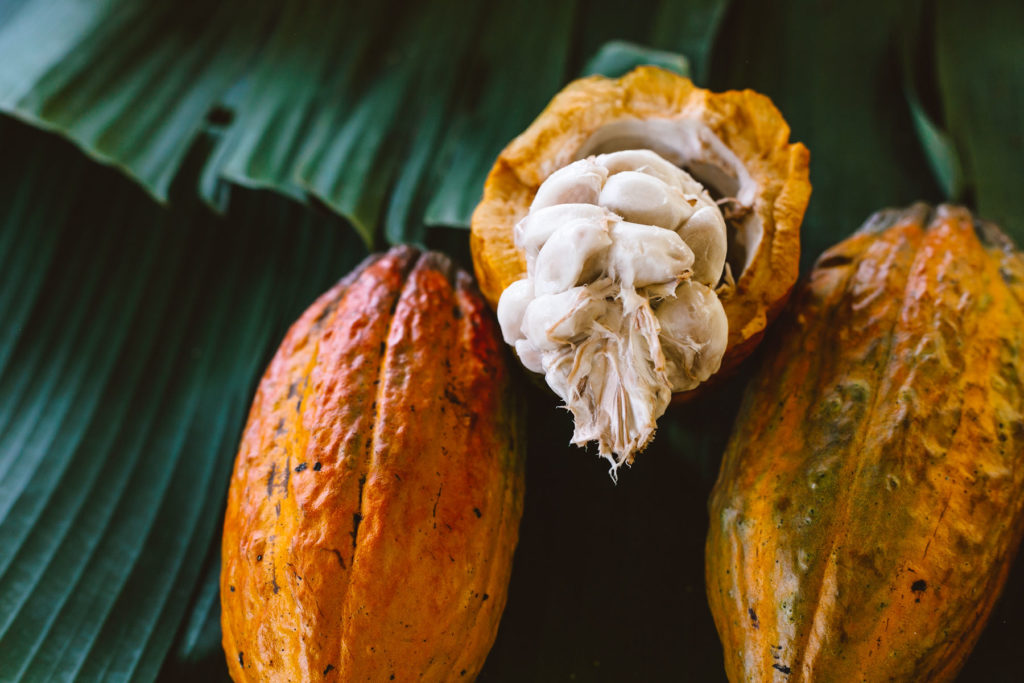
Sweet tooth? Explore the many local street stalls scattered around the island to browse the colourful confectionary and sample treats such as coconut sugar cake and benne balls, the latter a super sweet mix of brown sugar and sesame seeds (benne is the African word for sesame seeds). When eating out at any authentic restaurant in Tobago, be sure to save space for a Cassava pone for pudding. This dense and delicious desert is made of cassava (a root vegetable also known as yucca), pumpkin, coconut and a whole lot of local love.
Tobago’s association with cocoa stretches back to the 17th century and the industry is now making a comeback, thanks to local Duane Dove who has transformed his parent’s old cocoa farm into the Tobago Cocoa Estate. Not only will Duane take you on a tour of his business and teach you about Tobago’s cocoa history, he will also allow you to get stuck in with the different parts of process. Expect to help out with everything from the fermentation to the drying stage. Your work will be rewarded at the end of the tour, when you will be given a taste of the chocolate along with a shot of rum. Cheers!
Did you know? Cocoa balls are used to make cocoa tea, which is a staple in most homes in Tobago, especially on a Sunday. Locals have cocoa trees in their back yards and most farmers keep a few trees as part of their crops.
Street food
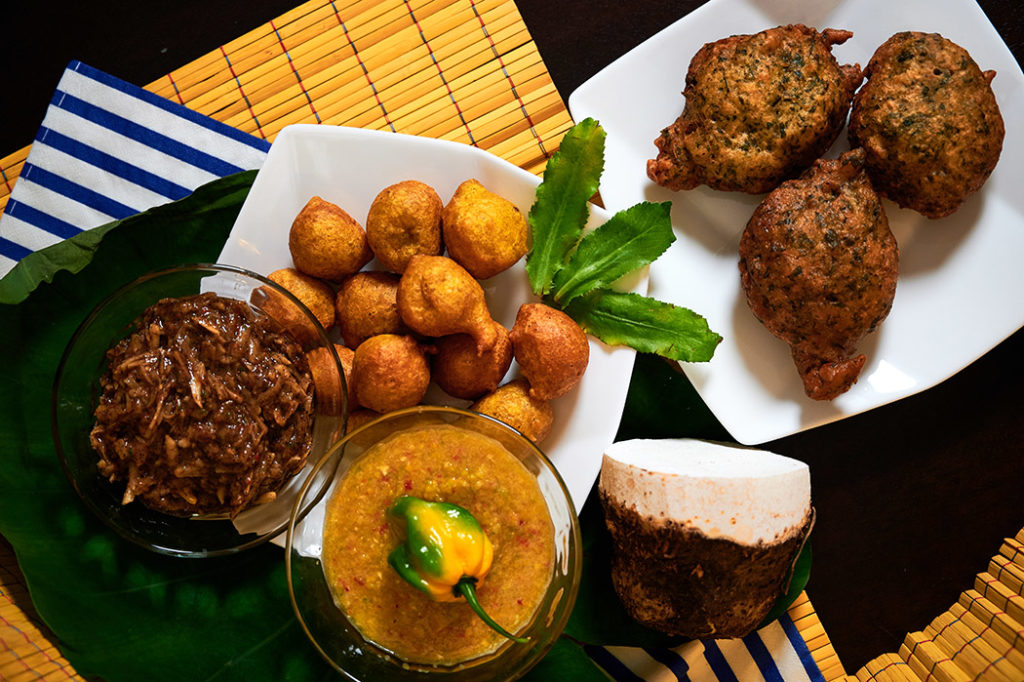
Visiting the eclectic and atmospheric street stalls in Tobago’s Store Bay gives an enriching insight into the many different cultures that have influenced the Caribbean island, such as its Indian heritage which can be sampled at the stalls selling rotis (flatbreads filled with curried meat, vegetables or fish) and aloo pies (doughballs filled with spiced potato), as well as the island’s Creole culture, found at stalls selling the likes of barbecued pigtails, corn soup and accra.
After you’ve eaten your fill, spend some time walking off your food by slowly wandering the rest of the stalls, soaking up the daily hustle and bustle of life here, watching the locals come and go for a quick bite and chat throughout the day.
However, Store Bay isn’t the only place you can find street food. On a stroll around different villages in the afternoons, you’ll likely see numerous vendors selling tasty treats on the streets such as local sweets, doubles, puddings and a variety of souse.
Creole food
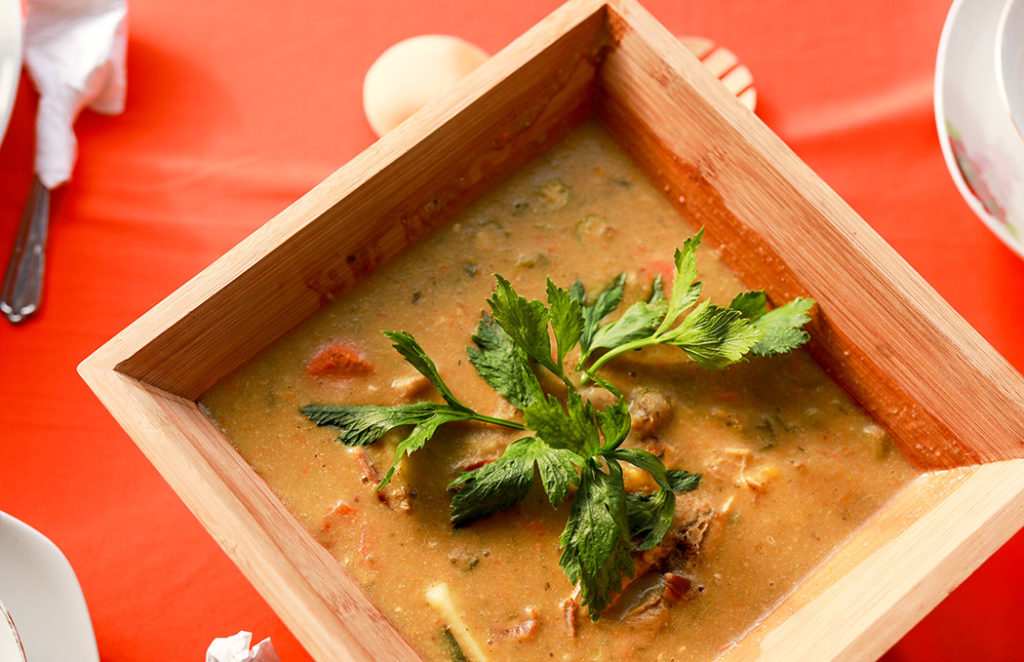
Tobago has had the most change of hands in Caribbean history and this has had a strong influence on the culture and gastronomy, giving rise to the island’s popular Creole cuisine. The most well-known dish is callaloo, a stew composed of dasheen leaves and a mix of herbs and spices, often dished up alongside crab, chicken or salted pork. Creole food features prominently on restaurant menus all across Tobago and you’ll smell the comforting aromas wafting through the open doors of restaurants as you wander the streets. So, head inside, grab a table and a menu and order the likes of corn soup, pelau (a meat and rice dish loosely based on Spanish paella), pigeon peas and macaroni pie to eat like the locals do.
Did you know? One traditional dish of Tobago is Saturday soup. This hearty dish used to only be served up on – you guessed it – Saturdays, and is what Tobagonian mums served their families on this day as they were so busy cleaning the house, they didn’t want to spend long cooking. Overtime, it has become a popular breakfast option and is now sold by vendors every day.
Seafood
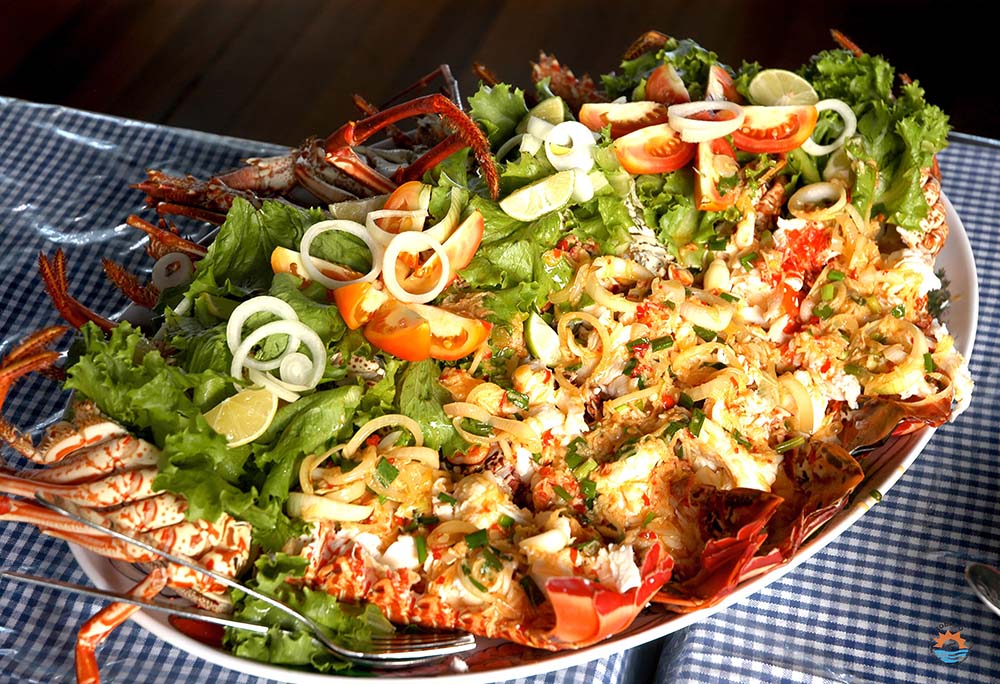
Don’t just eat the fish in Tobago, help the locals to catch it! Fishermen in coastal villages such as Charlotteville, Castara and Parlatuvier cast their nets (known as seine) early in the mornings before the locals wander down to the shoreline to help them haul in their heavy nets, a communal practise that dates back some 150 years. Grab hold of the rope and help with the pull to not only be a part of this tradition, but to get rewarded with a couple of the freshly caught fish for yourself. Later, you will be able to find that morning’s catch cooking on a roadside stall: lunch doesn’t get much fresher than that.
More seafood treats can be found in the form of battered fillets, giant grilled prawns, barracuda steaks and smoked herring. Come the evening, follow the glow of a roaring fire on the beach to discover a barbeque where the smell of sizzling fish grilling on the barbeque fills the air and locals dance to music, rum cocktail in hand.
Did you know? In Tobago, you can eat seafood up in a tree! At Jemma’s Seaview kitchen in Speyside, guests are treated to tables built into the branches of a huge almond tree and served generous helpings of traditional food such as shrimp, lobster, plantains, salads and rice. Not only is the food fantastic, but the views are too, and you’ll get to enjoy panoramas of the golden sand and azure sea from your vantage point.
Local cocktails
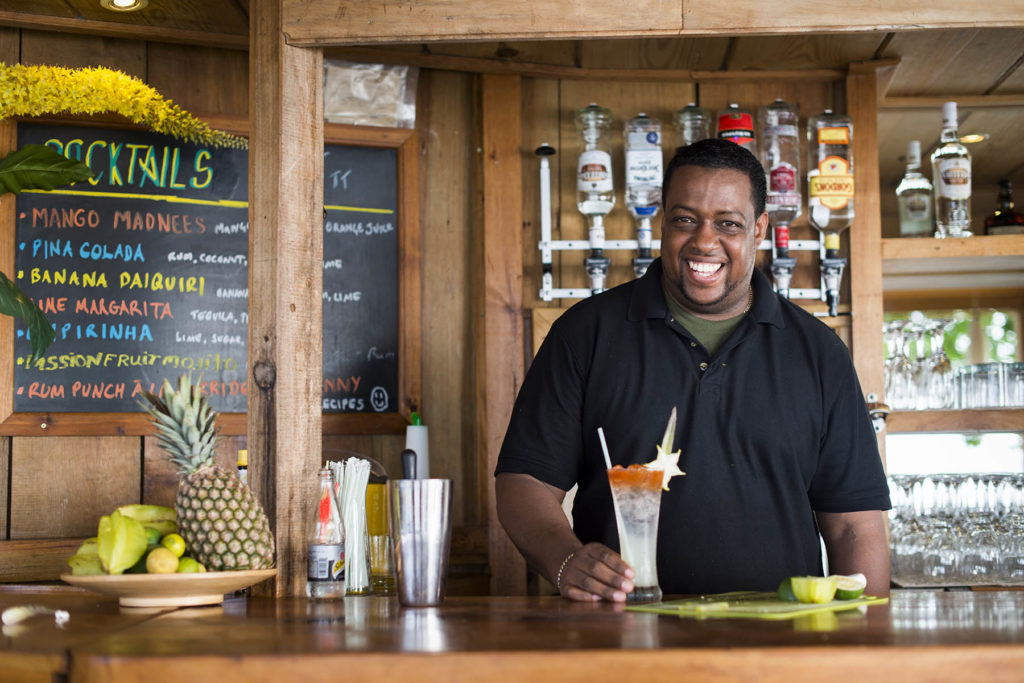
What could be a better way to end a day in Tobago than by toasting the sinking sun with a cocktail in hand? Shaken up with fresh fruits from the island, Tobago’s cocktails promise to be deliciously fresh. Head to a beach bar to watch bar tenders juggling ingredients such as fresh fruit, syrups and Angostura bitters (made in Trinidad and used widely in Tobago) before shaking them up to present you with a cocktail that you can sit back, relax and watch the fiery sunset with. The beach bars aren’t just great for sampling some of its finest blends, but also allows you to lime with the locals while sipping on a drink.
Did you know? “lime” is a word used not just in Tobago but throughout the Caribbean. It basically means a gathering or to hang out.
© 2023 Tobago Go Beyond | Privacy Policy